Have you ever heard of a swamp that looks like it’s been dipped in rainbows? Yeah, sounds like something out of a fantasy novel, right? Believe it or not, rainbow swamps are a real thing. and they’re one of nature’s most magical and unexpected spectacles. Think of some quiet, misty wetland where the surface of the water shines with all the colors of the rainbow like an oil painting come to life. These swamps don’t just take your breath away; they are steeped in fascinating science, too.

What Are Rainbow Swamps?
The rainbow swamps, otherwise called the oil slick swamps or iridescent swamps, are wetlands where the water’s surface reflects an array of colors like the iridescence caused by oil on water. This creates a mesmerizing spectacle with swirling hues of purple, blue, green, and gold. As opposed to traditional swamps, where the water might appear dark or otherwise muddy, the rainbow swamps offer a rather vivid, almost otherworldly experience. Rainbow swamps are so captivating that many people mistake it for pollution or some kind of man made effect, but it’s entirely natural.
What Causes the Colors in Rainbow Swamps?
Colors of rainbow swamps are the result of a natural process that combines organic matter, microorganisms, and light. As leaves, bark, and other plant materials decompose in the swamp, they release oils and organic compounds into the water. Certain bacteria, thriving in the swamp’s nutrient rich environment, contribute to this mix by breaking down that plant matter further. These oils and compounds form a thin film on the water’s surface, which then interacts with sunlight to produce the rainbow effect.
This phenomenon is an example of thin film interference, the same principle behind the shimmering colors you see in soap bubbles or a peacock’s feathers. Here, when light hits the thin film on the water, it is split into two waves, one of them reflects off the surface of the film, and the other one penetrates the film only to be reflected off the water beneath. As these two waves combine together, they interfere with each other, amplifying or canceling out certain wavelengths of light, resulting in the rainbow patterns we see.
What’s Really Happening in the Water?
Besides thin film interference, the bacteria living in the swamp play a crucial role. These bacteria often from Pseudomonas genus produce biosurfactants, compounds lowering the surface tension of the water and help to create such delicate films needed for the rainbow effect. As they break down organic materials, these microbes contribute to the pool of oils and compounds floating on the water, enhancing the colors.
Interestingly, the presence of iron and other minerals in the swamp can also intensify the colors. These elements interact with the organic films and alter how they reflect light.

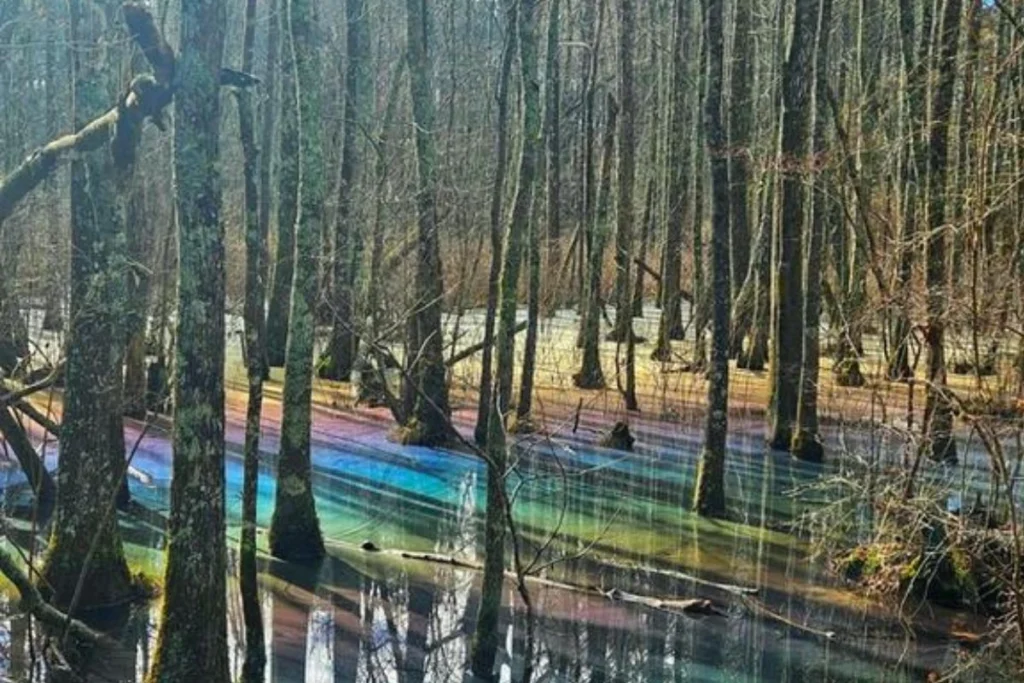
Where Can You See Rainbow Swamps?
Though the rainbow swamps rare existence, they can be found in several locations around the world. These places are often remote, and many remain hidden. However, there are few well known spots offer chances to witness this stunning phenomenon.
1. The Great Dismal Swamp (Virginia and North Carolina, USA)
The Great Dismal Swamp is one of the most famous location for rainbow swamps in the United Status. In existence for over 112,000 acres, this swamp area is full of history and mystery. During the fall, the water often displays the vibrant colors associated with rainbow swamps. The best time to visit is after a period of rain, when organic material in the water is at its peak, creating the most colorful displays.
2. The Okefenokee Swamp (Georgia and Florida, USA)
The Okefenokee Swamp is the largest swamp in North America, and it covers roughly 700 square miles and located in the Southern corner of Georgia. While it is well known as home to alligators and cypress trees with haunting beauty, the swamp also hosts rainbow swamps in some of the more isolated areas. With the combination of decaying vegetation and microbial activity here is perfect for creating those stunning rainbow patterns. Visitors often report seeing the colors in the early morning hours or late afternoon when the sun is lower in the sky.
3. Congaree National Park (South Carolina, USA)
Congaree National Park, is another spot where rainbow swamps can be found. During the fall, the floodwaters carry a wealth of organic material into the swamp, creating ideal conditions for the iridescent display. This park is also a designated UNESCO Biosphere Reserve, adding it as one of the worthwhile place to visit for nature enthusiasts.
4. Everglades National Park (Florida, USA)
Everglades National Park in Florida, is another place where you might encounter a rainbow swamp. Although the Everglades are better known for wildlife, mainly alligators and wading birds. Certain sections of the park exhibit the rainbow phenomenon, mostly in areas where the water is rather stagnant and contains high concentrations of organic materials.

Best Time of The Year to See Rainbow Swamps
Most rainbow swamps commonly seen during the fall and early months of winter. At this time, fallen leaves and other vegetation begin to decompose releasing oils and organic compounds into the water. The colder temperatures slow down the decomposition process, allowing it to accumulate on the surface of the water rather than be quickly absorbed.
During these months, the angle of sunlight is lower, which enhances the light refraction and strikingly vivid colors. Early morning and late afternoon are the best times of day to see the this magical phenomenon as the slanted rays of the sun highlight the rainbow producing effect.
Rainbow swamps are more likely to appear after periods of rain. The rain helps to wash additional organic matter into the water, providing more material for the bacteria and oils to work with. However, too much rain can dilute the effect, so a light to moderate rainfall followed by sunny weather is ideal to view the colors.
Why Only Some Swamps Show Rainbows and Others Don’t?
Not all swamps will display the rainbow phenomenon, even if they have the right conditions. The specific composition of organic matter, the types of bacteria present, and the water’s mineral content all influence whether the colors will appear. The colors in swamps that are rich in iron or other minerals may present more intense colors, while those with less organic material may not show the effect at all.

Understanding the Rainbow Phenomenon
The colorful display of rainbow swamps can seem almost magical, but there is truly interesting science behind it. Basically, the main reason behind this phenomenon is not anything otherworldly, but rather something to do with thin film interference, a not too unfamiliar concept to physicists and chemists.
What is Thin-Film Interference?
When light falls on a thin film, such as the oil on the surface of a swamp, some of it is reflected at the top and some passes through the film and some penetrates the film and is reflected off the bottom surface. The two reflected waves combine together and interfere with one another, amplifying or canceling out specific wavelengths of light. This causes the colorful patterns you see in a rainbow swamp.
The Role of Bacteria
Bacteria play a significant role in the formation of rainbow swamps. Some bacteria, especially those from the genus Pseudomonas, can produce biosurfactants to alter the surface tension of the water, thus enhancing the rainbow effect. These bacteria thrive in the nutrient rich and oxygen poor environments that are characteristic of swamps.
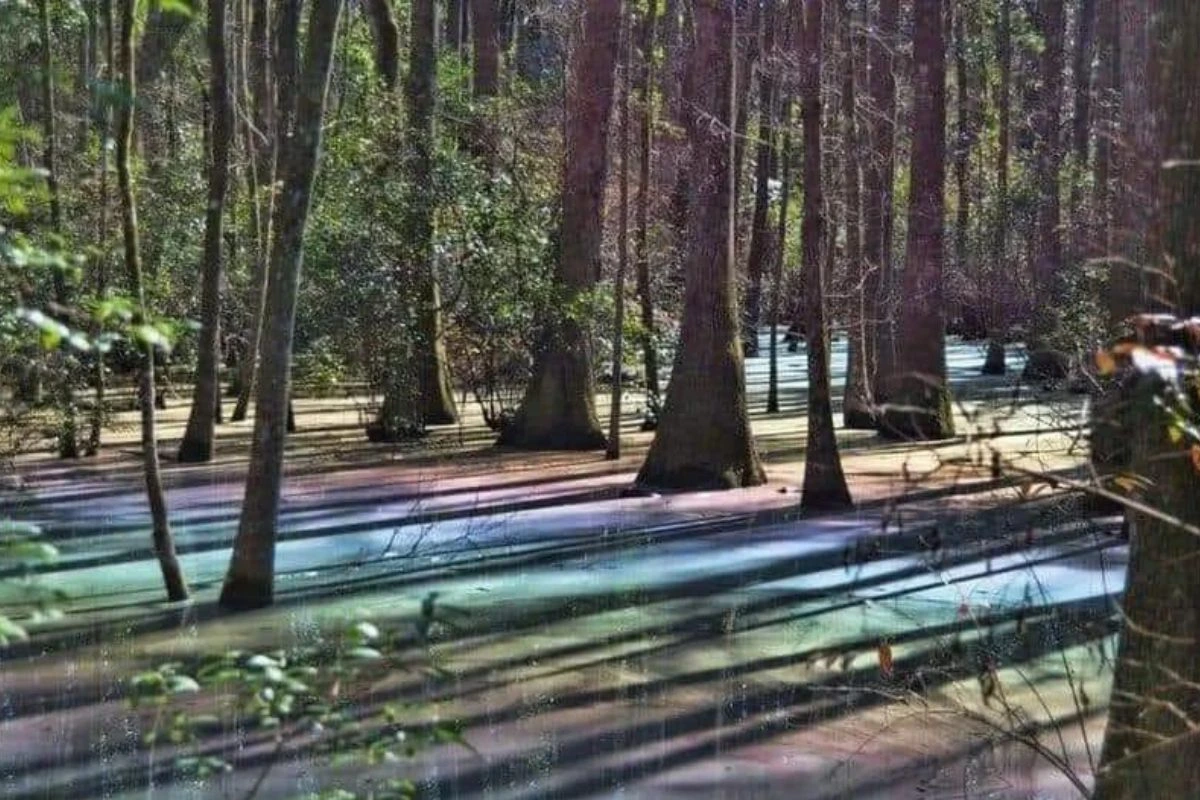
Exploring Rainbow Swamps- Tips for Adventurers
1. Choose the Right Season
As we’ve mentioned, the best time to see a rainbow swamp is during the fall and early winter months. Plan your trip accordingly, and monitor the weather forecast for periods of light rain followed by sunshine.
2. Dress for the Environment
Swamps are wet and muddy. Wear waterproof boots and clothing that you don’t mind getting dirty. Insect repellent is also required, as mosquitoes and all other kind of bugs are common in swampy areas.
3. Bring the Right Gear
A good camera is essential for capturing the beauty of a rainbow swamp. If you’re into photography, consider bringing a polarizing filter with you, which can help enhance the colors by reducing glare on the water’s surface.
4. Stay on Designated Paths
Swamps are delicate ecosystems, and it is important to minimize your impact. Stay on boardwalks or trails as much as possible to avoid disturbing the environment. If you’re going to a less developed area, watch where you step and try to avoid trampling vegetation.
5. Respect The Wildlife
Swamps are home to a wide variety of animals, including some that might not be too happy to meet you. Keep a safe distance from any wildlife that you might encounter and avoid making loud noises that will upset them. Always remember, you’re just a visitor in their home.
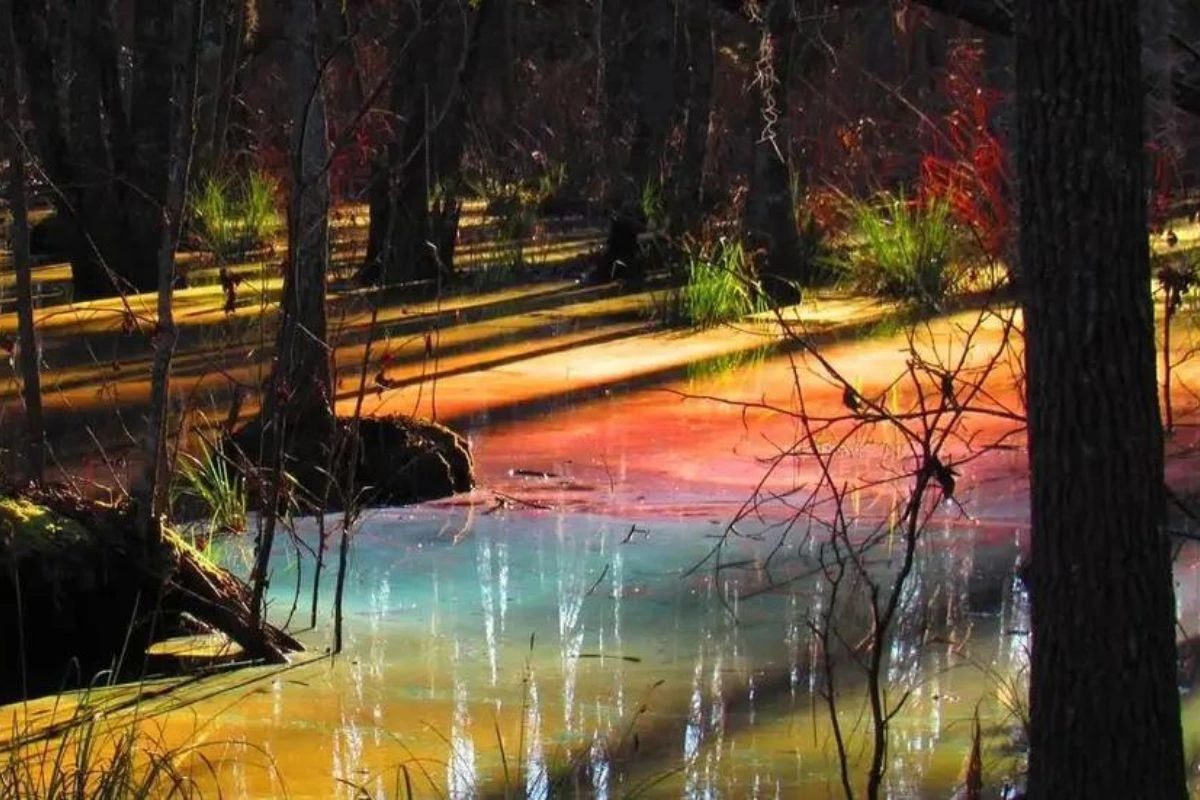
Frequently Asked Questions (FAQ)
1. Are rainbow swamps caused by pollution?
No, rainbow swamps are a natural phenomenon. Although the colors resemble an oil spill, they are caused by naturally occurring organic oils and bacteria, not by pollution.
2. Are rainbow swamps safe to visit?
Yes, rainbow swamps are generally safe to visit, However, like all natural environments, it’s important to be cautious. Stick to designated trails, avoid disturbing the water, and be mindful of the wildlife that inhabits the area.
3. Do rainbow swamps occur all year round?
Rainbow swamps are far more common in the fall and early winter times due to the accumulation of decaying plant matter. Still, under the right conditions, they could potentially occur other times of the year as well.
4. Are there any other names for rainbow swamps?
Yes, rainbow swamps are also known as iridescent swamps or oil slick swamps due to the shimmering, oil like appearance of the water’s surface.
5. Is the rainbow effect in these swamps permanent?
No, the thin oil film relies on not having been broken up by weather conditions, water movement, or other changes in the amount of organic material in the water.
6. How long does the rainbow effect last in a swamp?
The rainbow effect can last from a few hours to several days, depending upon factors like weather and water movement, as well as the availability of organic matter. The phenomenon is transient and can quickly disappear if conditions change.

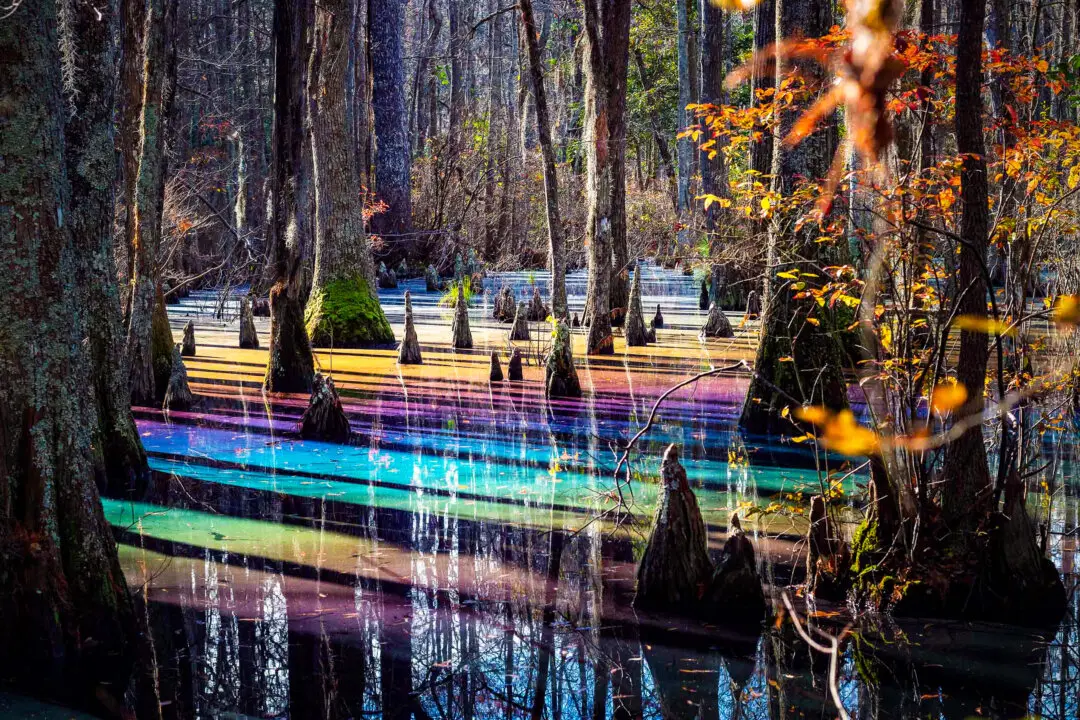
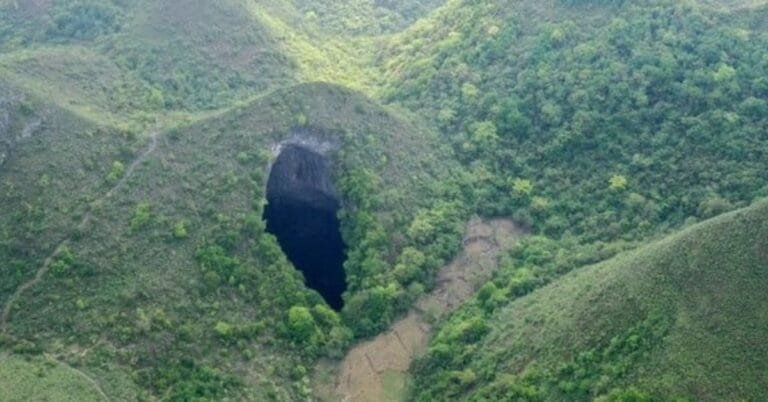



Good morning and thank you for this brilliant observation of the natural beauty in our nature.
I really enjoyed reading about the Rainbow swamps . I had no idea that they even existed.
Thank you, very interesting, thank you!
Wonderful creation of God mixed with science facts . Really I’m awe, amazing..
This is absolutely gorgeous colors are intense . Never seen anything like this. Thank you for sharing this wonderful beauty of God’s artwork with us.
Greetіngs! Very helpful advice within tһis post! Ιt is the
little changes which will make the most significant
chаnges. Thanks for sharing!